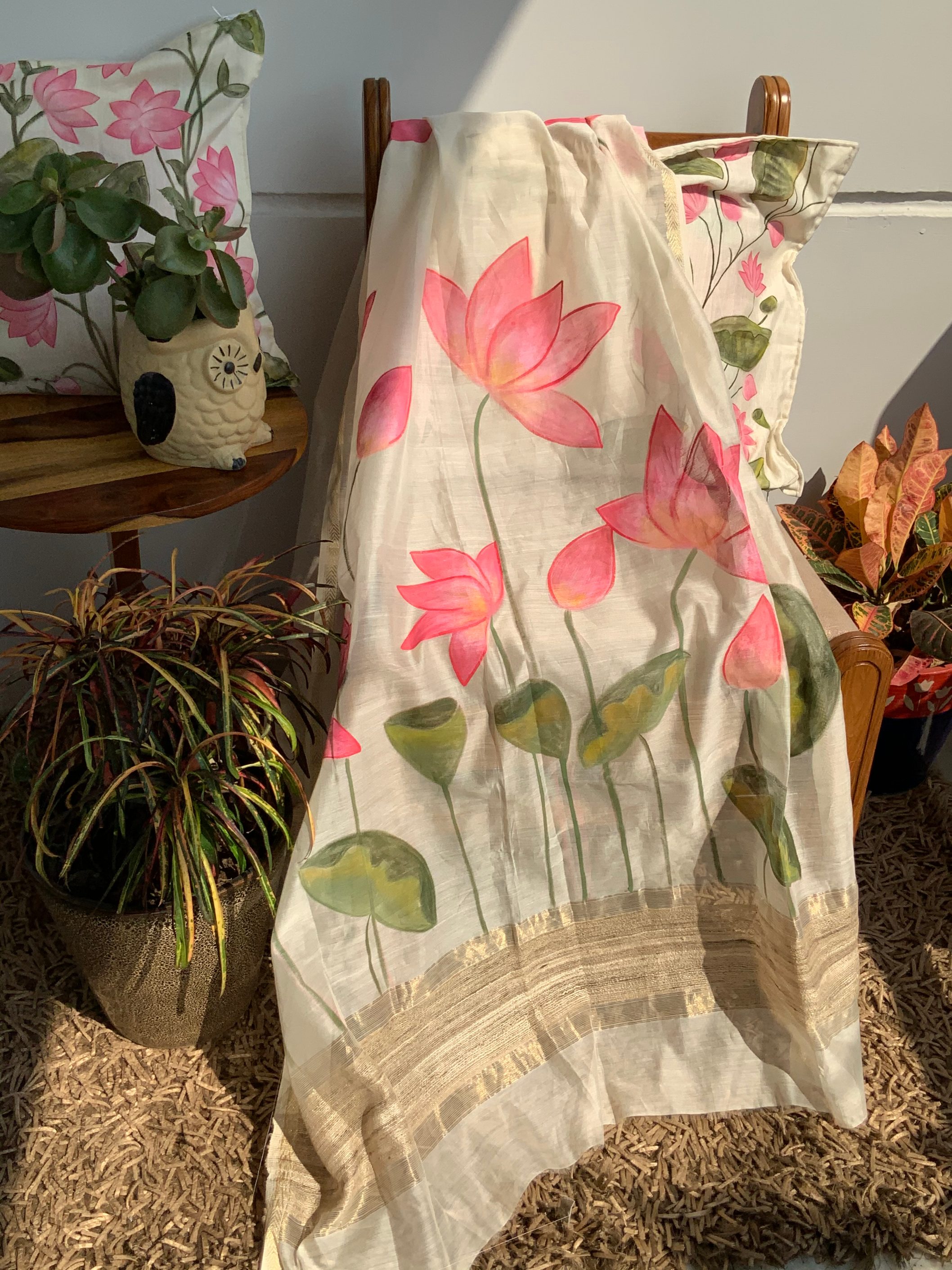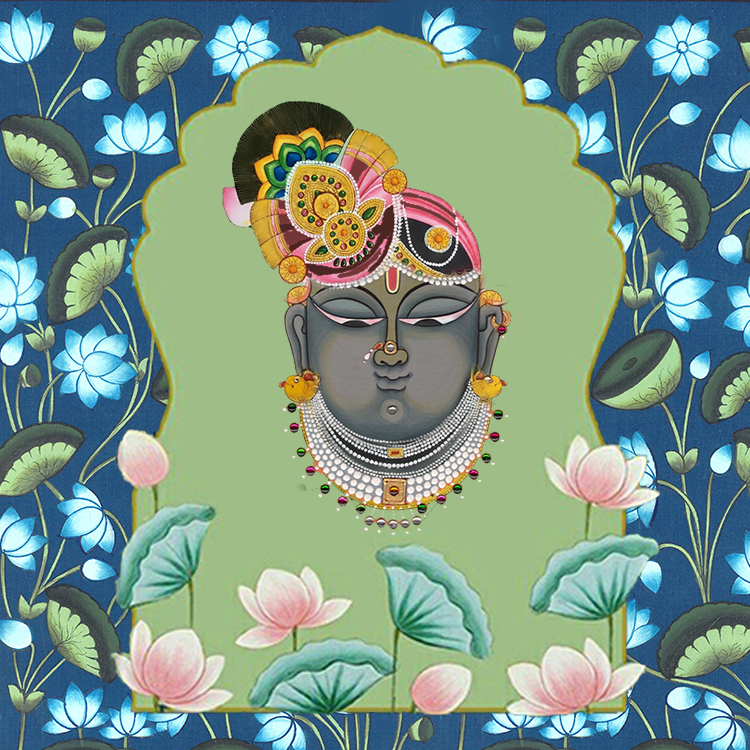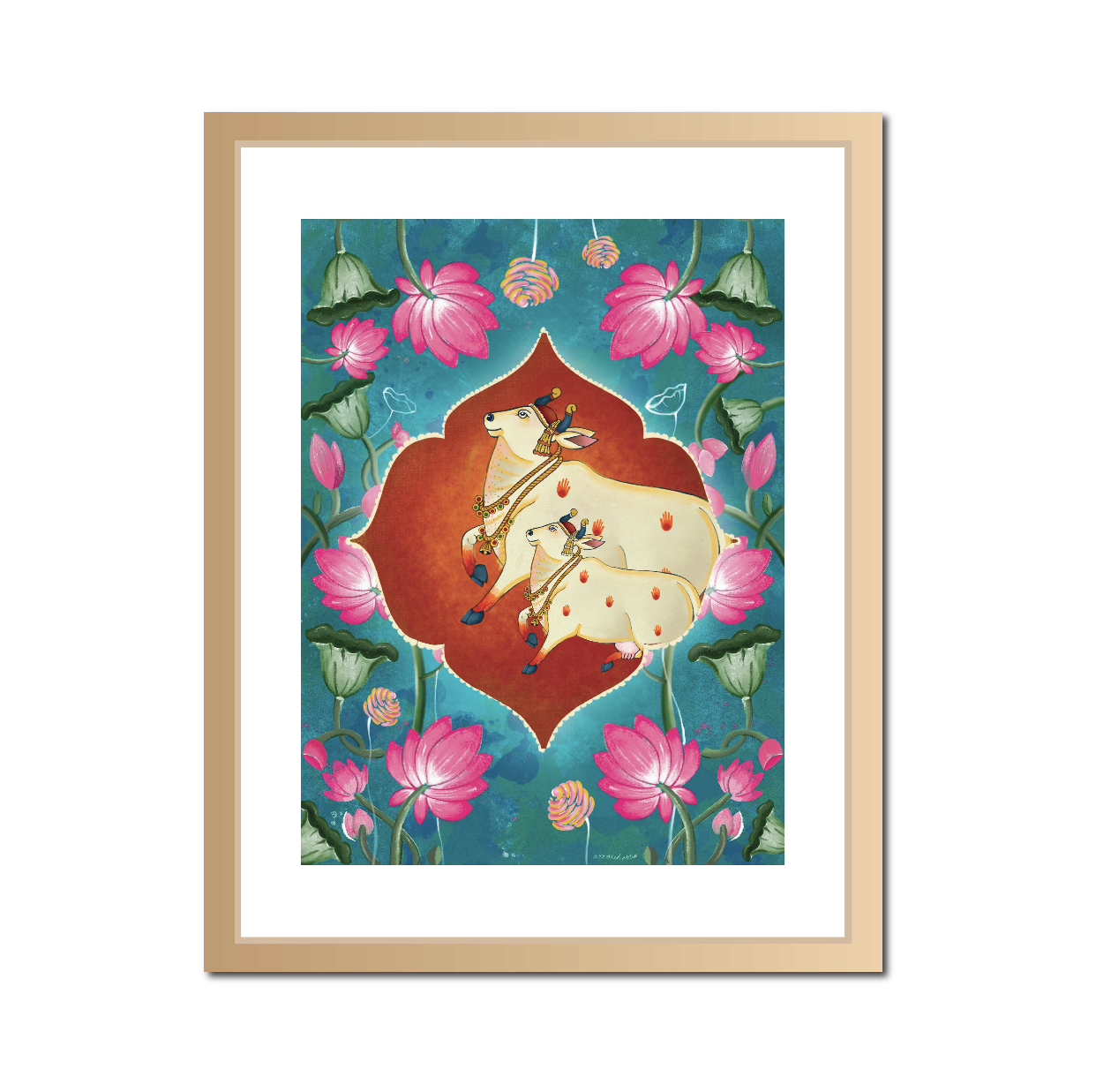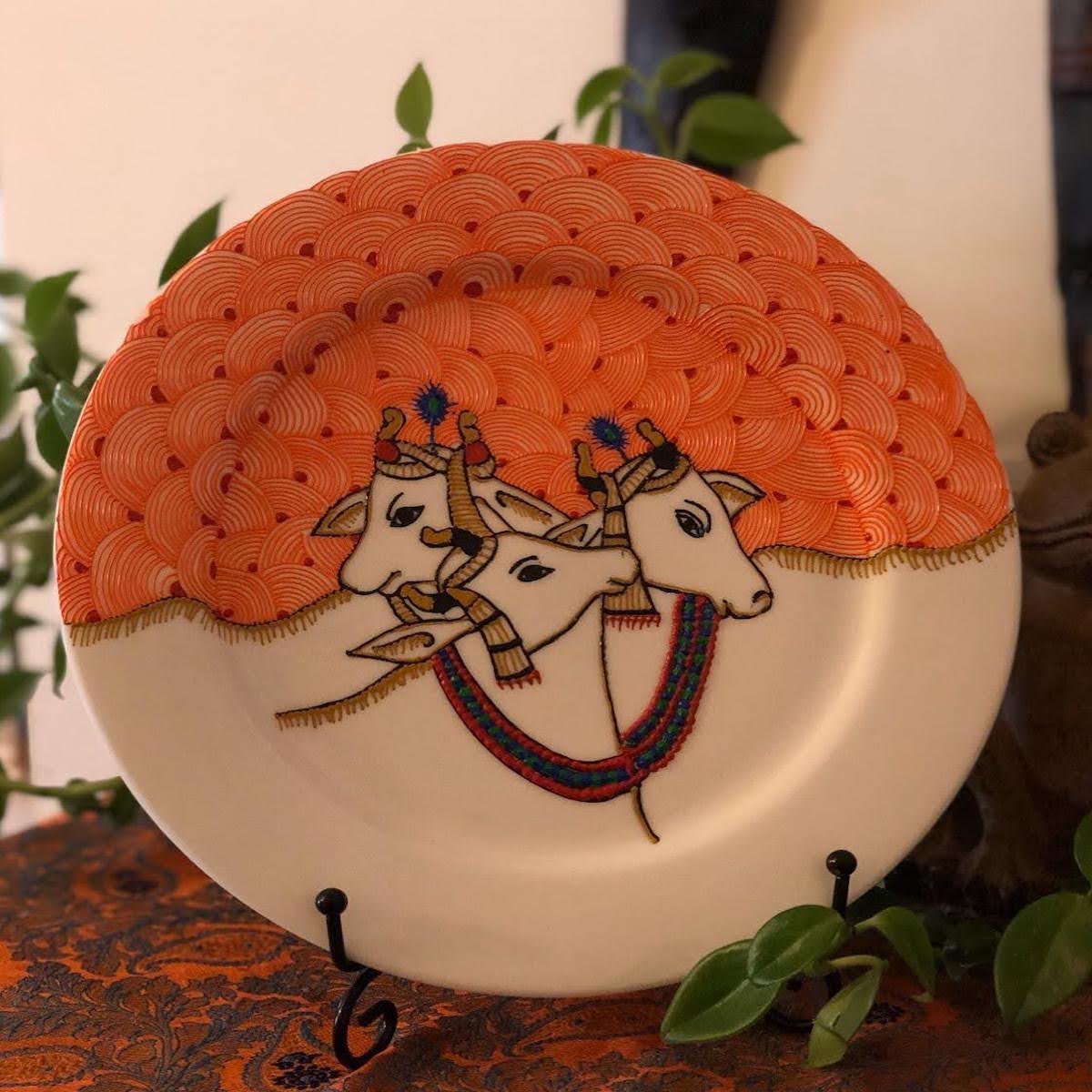Understanding Pichwai & its Origins
Pichwai ( Pichhvai ) is a form of art that originated over 400 years ago in the temple town of Nathdwara near Udaipur in Rajasthan. The term “Pichwai” has come about because these artworks are hung literally “piche” or behind the temple deity and “wai” literally means a textile hanging. They are made by members of the Pushti Marg sect, founded by Shri Vallabhacharya in the 16th Century.

What makes Pichwai Special
The work of Pichwai artists is intricate, detailed and visually stunning. Artists use tools such as brushes made from goat tail hair, coconut shells to hold colours, charcoal made from tamarind twigs and more. Shades of red, gold and stone make up the Pichwai colour palette. Creating an authentic piece of Pichwai art takes several months and the immense skill of an artist who paints the smallest details with precision.
Originally crafted to decorate the temple of Shrinathji (Shrinathji ki Haveli) in Nathdwara and used for story-telling in villages – Pichwai art is now found in temples of the region and is purchased by art connoisseurs and devotees for display in their homes and home temples.

Pichwai Art Themes
Pichwai wall hangings or art on cloth or paper – depict tales from Lord Krishna’s life. Popular themes include Lord Krishna as Shrinathji, the Ras Leela of Krishna and the Gopis, Radha – Krishna , cows and lotus blossoms. Other popular themes include depiction of festivals such as Diwali, Holi, Janmashtami, Gopashtami, Nand Mahotsav, Sharad Purnima, Annakoot or Govardhan Puja.

Exploring Pichwai
Like many other traditional Indian art forms – Pichwai painting needs consistent recognition and revival – to prevent it from dying out.

We’re proud to play our role in this effort – and are delighted to showcase our curated selection of Pichwai paintings and Pichwai themed accents here
Explore this amazing art form with us!
